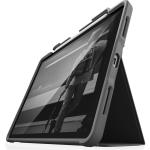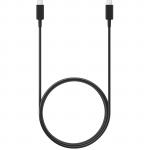MOXA NPort W2150A-W4-EU 1-port wireless device server, 3-in-1, 802.11a/b/g/n WLAN EU band, 12 to 48 VDC, 0 to 55°C operating temperature, with EU plug
MOXA NPort W2150A-W4-EU 1-port wireless device server, 3-in-1, 802.11a/b/g/n WLAN EU band, 12 to 48 VDC, 0 to 55°C operating temperature, with EU plug
- Brand: MOXA
- MPN: NPort W2150A-W4-EU
- Part #: IPCMXANPOTW2101
- UPC:
- Brand: MOXA
- MPN: NPort W2150A-W4-EU
- Part #: IPCMXANPOTW2101
- UPC:
Features
Specifications
Reviews
Delivery & Pick-up
Returns & Warranty
Related Promotions
Popular Connectivity





MOXA NPort W2150A-W4-EU 1-port wireless device server, 3-in-1, 802.11a/b/g/n WLAN EU band, 12 to 48 VDC, 0 to 55°C operating temperature, with EU plug
- Brand: MOXA
- MPN: NPort W2150A-W4-EU
- Part #: IPCMXANPOTW2101

Product URL: https://www.pbtech.co.nz/product/IPCMXANPOTW2101/MOXA-NPort-W2150A-EU-1-port-wireless-device-server
| Branch | New Stock | On Display |
|---|---|---|
| Auckland - Albany | - | |
| Auckland - Glenfield | - | |
| Auckland - Queen Street | - | |
| Auckland - Auckland Uni | - | |
| Auckland - Newmarket | - | |
| Auckland - Westgate | - | |
| Auckland - Penrose | - | |
| Auckland - Henderson (Express) | - | |
| Auckland - St Lukes | - | |
| Auckland - Manukau | - | |
| Hamilton | - | |
| Tauranga | - | |
| New Plymouth | - | |
| Palmerston North | - | |
| Petone | - | |
| Wellington | - | |
| Auckland - Head Office | - | |
| Auckland - East Tamaki Warehouse | - | |
| Christchurch - Hornby | - | |
| Christchurch - Christchurch Central | - | |
| Dunedin | - |
Features
The NPort® W2150A and W2250A are the ideal choice for connecting your serial and Ethernet devices, such as PLCs, meters, and sensors, to a wireless LAN. Your communications software will be able to access the serial devices from anywhere over a wireless LAN. Moreover, the wireless device servers require fewer cables and are ideal for applications that involve difficult wiring situations. In Infrastructure Mode or Ad-Hoc Mode, the NPort® W2150A and NPort® W2250A can connect to Wi-Fi networks at offices and factories to allow users to move, or roam, between several APs (access points), and offer an excellent solution for devices that are frequently moved from place to place.
- Links serial and Ethernet devices to an IEEE 802.11a/b/g/n network
- Web-based configuration using built-in Ethernet or WLAN
- Enhanced surge protection for serial, LAN, and power
- Remote configuration with HTTPS, SSH
- Secure data access with WEP, WPA, WPA2
- Fast roaming for quick automatic switching between access points
- Offline port buffering and serial data log
- Dual power inputs (1 screw-type power jack, 1 terminal block)
Specifications
Ethernet Interface
10/100BaseT(X) Ports (RJ45 connector)
1
Magnetic Isolation Protection
1.5 kV (built-in)
Standards
IEEE 802.3 for 10BaseT
IEEE 802.3u for 100BaseT(X)
Ethernet Software Features
Configuration Options
Web Console (HTTP/HTTPS), Windows Utility
Management
DHCP Option 82, HTTP, IPv4, SMTP, SNMPv1/v2c/v3, Syslog, Telnet, Web Console
Windows Real COM Drivers
Windows 95/98/ME/NT/2000, Windows XP/2003/Vista/2008/7/8/8.1/10 (x86/x64), Windows 2008 R2/2012/2012 R2/2016/2019 (x64), Windows Embedded CE 5.0/6.0, Windows XP Embedded
Linux Real TTY Drivers
Kernel versions: 2.4.x, 2.6.x, 3.x, 4.x, and 5.x
Fixed TTY Drivers
SCO UNIX, SCO OpenServer, UnixWare 7, QNX 4.25, QNX 6, Solaris 10, FreeBSD, AIX 5.x, HP-UX 11i, Mac OS X
Android API
Android 3.1.x and later
MIB
Device Settings MIB, RFC1213, RFC1317
Security
HTTPS/SSL, User Authentication Management: local database, RADIUS, Secure Protocols: HTTPS (TLSv1.2), SSH, SNMPv3, Cryptography: HMAC, SHA-1, SHA-256, SHA-384, RSA-1024, AES-128, AES-256
Time Management
NTP Client, SNTP Client
WLAN Interface
WLAN Standards
802.11a/b/g/n
Receiver Sensitivity for 802.11a (measured at 5.680 GHz)
Typ. -91 @ 6 Mbps
Typ. -74 @ 54 Mbps
Receiver Sensitivity for 802.11b (measured at 2.437 GHz)
Typ. -92 dBm @ 1 Mbps
Typ. -84 dBm @ 11 Mbps
Receiver Sensitivity for 802.11g (measured at 2.437 GHz)
Typ. -91 dBm @ 6 Mbps
Typ. -73 dBm @ 54 Mbps
Receiver Sensitivity for 802.11n (2.4 GHz; measured at 2.437 GHz)
Typ. -89 dBm @ 6.5 Mbps (20 MHz)
Typ. -71 dBm @ 72.2 Mbps (20 MHz)
Receiver Sensitivity for 802.11n (5 GHz; measured at 5.680 GHz)
Typ. -89 dBm @ 6.5 Mbps (20 MHz)
Typ. -71 dBm @ 72.2 Mbps (20 MHz)
Typ. -85 dBm @ 13.5 Mbps (40 MHz)
Typ. -67 dBm @ 150 Mbps (40 MHz)
Modulation Type
DSSS
OFDM
Transmission Distance
Up to 100 meters (in open areas)
Transmission Rate
802.11a/g: 54 Mbps
802.11b: 11 Mbps
802.11n: 6.5 to 150 Mbps
Transmitter Power for 802.11b
16±1.5 dBm @ 1 Mbps
16±1.5 dBm @ 11 Mbps
Transmitter Power for 802.11g
16±1.5 dBm @ 6 Mbps
14±1.5 dBm @ 54 Mbps
Transmitter Power for 802.11a
15±1.5 dBm @ 6 Mbps
14±1.5 dBm @ 54 Mbps
Transmitter Power for 802.11n (2.4 GHz)
16 dBm @ 1.5 Mbps (6.5 MHz)
12 dBm @ 1.5 Mbps (72.2 MHz)
Transmitter Power for 802.11n (5 GHz)
15 dBm @ 1.5 Mbps (6.5 MHz)
12 dBm @ 1.5 Mbps (150 MHz)
Frequency Band for CN (20 MHz operating channels)
2.412 to 2.472 GHz (13 channels)
5.180 to 5.240 GHz (4 channels)
5.260 to 5.320 GHz (4 channels)
5.745 to 5.825 GHz (5 channels)
Frequency Band for EU (20 MHz operating channels)
2.412 to 2.472 GHz (13 channels)
5.180 to 5.240 GHz (4 channels)
5.260 to 5.320 GHz (4 channels)
5.500 to 5.700 GHz (11 channels)
Frequency Band for JP (20 MHz operating channels)
2.412 to 2.484 GHz (14 channels)
5.180 to 5.240 GHz (4 channels)
5.260 to 5.320 GHz (4 channels)
5.500 to 5.700 GHz (11 channels)
Frequency Band for US (20 MHz operating channels)
2.412 to 2.462 GHz (11 channels)
5.180 to 5.240 GHz (4 channels)
5.260 to 5.320 GHz (4 channels)
5.500 to 5.700 GHz (11 channels)
5.745 to 5.825 GHz (5 channels)
Wireless Security
WEP encryption (64-bit and 128-bit)
WPA/WPA2-Enterprise (IEEE 802.1X/RADIUS, TKIP, AES)
WPA/WPA2-Personal
WLAN Modes
Ad-hoc Mode, Infrastructure mode
Antenna Characteristics
Connector
RP-SMA (male)
Antenna Type
Omni-directional
Security Functions
Authentication
Local database
RADIUS
Encryption
HTTPS, AES-128, AES-256, HMAC, RSA-1024, SHA-1, SHA-256, SHA-384
Security Protocols
SNMPv3
SSHv2
HTTPS (TLS 1.2)
Serial Interface
Connector
DB9 male
No. of Ports
1
Serial Standards
RS-232, RS-422, RS-485
Operation Modes
Real COM mode, TCP Server mode, TCP Client mode, UDP mode, RFC2217 mode, Pair Connection mode, Ethernet Modem mode, Disabled
Baudrate
50 bps to 921.6 kbps
Data Bits
5, 6, 7, 8
Stop Bits
1, 1.5, 2
Parity
None, Even, Odd, Space, Mark
Flow Control
None, RTS/CTS, XON/XOFF
RS-485 Data Direction Control
ADDC® (automatic data direction control)
Pull High/Low Resistor for RS-485
1 kilo-ohm, 150 kilo-ohms
Terminator for RS-485
120 ohms
Surge
1 kV











